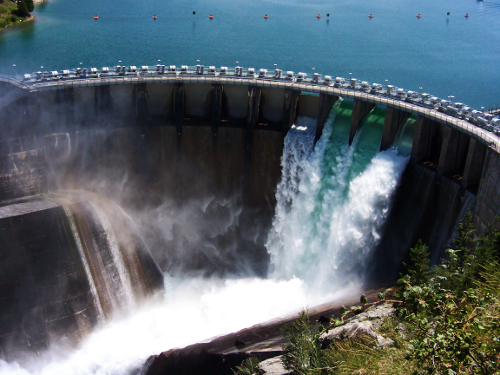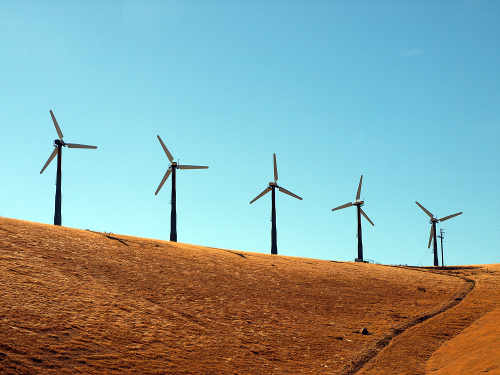The developed economies of the world are constantly tormented by political debates about the sustainable development of green energy policies, and UN climate talks inches forward at ‘glacial velocity’. Meanwhile, developing countries are wholeheartedly embracing green electricity production, as evidenced by the fast closing investment gap. According to 2012 figures, while developed countries invested 132 billion dollars in clean energy, developing countries’ total investment has now reached 112 billion dollars.
Apparently, developing countries find green energy installations far cheaper than continued dependence on expensive fossil fuels. And prospects look even brighter when poorer countries consider the co-benefits of new jobs, predictable energy costs and a cleaner environment.
The Growth of Solar Agriculture
Such a strategy is being actively considered in Africa, where Kenya is the latest country to opt for the clean energy route. With over $500 million invested in solar power projects, the Kenyan government has now allocated nine suitable sites for development as solar farms, the output of which by 2016 will be able to meet 50 percent of Kenya’s estimated electricity needs. The cost of building the solar installation is estimated at $1.2 billion and, with the design phase nearly complete, construction will begin later this year. The construction, which is slated for completion in two years, will be co-funded by the government and private companies with the Kenyan government responsible for around 50 percent of spending.
Water power
 Current energy needs are mostly met through the installation of hydroelectric power, but because this is a high-cost option, and also because Kenya is considered highly vulnerable to climate extremes, there is an urgent need to expand the photovoltaic sector. Commenting on behalf of the Kenya Renewable Energy Association (KEREA), senior administrator Cliff Owiti said: ‘The costs associated with hydroelectric power plants are very high, considering they are affected by low water levels in the main supply dam. With high investment in solar power, we will see almost no power outages and electricity costs will be reduced as electricity supply will be high.’
Current energy needs are mostly met through the installation of hydroelectric power, but because this is a high-cost option, and also because Kenya is considered highly vulnerable to climate extremes, there is an urgent need to expand the photovoltaic sector. Commenting on behalf of the Kenya Renewable Energy Association (KEREA), senior administrator Cliff Owiti said: ‘The costs associated with hydroelectric power plants are very high, considering they are affected by low water levels in the main supply dam. With high investment in solar power, we will see almost no power outages and electricity costs will be reduced as electricity supply will be high.’
Adding that the planned development is also part of Kenya’s environmental protection strategy, he said: ‘We hope that when the entire project is completed in 2016, more than 50 per cent of Kenya’s energy production will consist of solar power. We have seen solar investments in Kenya such as the factory that opened here in 2011 producing solar energy panels.’
Supporting the anticipated scale of future energy price reductions, University of Nairobi economics professor Germano Mwabu said: ‘When projects are completed and solar power is put to good use, electricity costs can fall by as much as 80 per cent.’
Wind Farm
 In the next plan, Kenya will also build a giant wind farm near Lake Turkana. This 365 turbine project, the Lake Turkana Wind Power Consortium (LTWP), will be the largest wind farm in sub-Saharan Africa. Scheduled to become operational in 2015, the LTWP scheme is likely to create several thousand jobs and will be the largest private investment in Kenya’s history.
In the next plan, Kenya will also build a giant wind farm near Lake Turkana. This 365 turbine project, the Lake Turkana Wind Power Consortium (LTWP), will be the largest wind farm in sub-Saharan Africa. Scheduled to become operational in 2015, the LTWP scheme is likely to create several thousand jobs and will be the largest private investment in Kenya’s history.
Currently ranked 22nd in Africa by total electricity produced, and 46th on the world solar energy generation list, Kenya could jump to third for solar energy generation within four years, according to the latest projections from the government’s Energy Regulatory Commission.
Elsewhere in Africa, Ethiopian Prime Minister Hailemariam Desalegn has also confirmed his country’s intention to shift to cleaner energy by announcing details of plans for a 1,000 megawatt geothermal plant. This power project – potentially one of the largest in the world – will be located in the Corbetti region of Ethiopia and is intended to provide East Africa with the capacity to harness its vast energy resources. In doing so, the plant will expand access to geothermal energy across Ethiopia, Kenya, Tanzania, Nigeria, Liberia and Ghana.
The Ethiopian scheme is part of President Obama’s $7 billion ‘Power Africa’ initiative which aims to at least double sub-Saharan Africa’s access to power. Construction will be handled by Reykjavik Geothermal, a US-Icelandic geothermal development specialist, who has previously used his expertise to facilitate projects in 30 other countries. Reykjavik Geothermal’s investment in Ethiopia is expected to be up to 4 billion dollars with Ethiopia contracted to buy the plant’s electricity output for 25 years.
According to Bloomberg New Energy Finance analyst Mark Taylor, up to 20 gigawatts of geothermal energy can potentially be harvested from East Africa’s Great Rift Valley alone, and as such we could see similar clean energy schemes emerge elsewhere in Africa.
Commenting on the urgent need for such developments, Prime Minister Desalegn, who is already convinced that embracing green energy production is the best way forward for Ethiopia, and firmly believes that such a strategy can help ‘neighboring countries too’, said: ‘Aid is not a solution . Trade and investment is the solution,’ adding, ‘Africa needs to transform, and energy is central to that transformation.’
C.McDonalds – I am actively involved in a number of ‘green’ projects and like, whenever I can, to respect my local environment. From my sources electricity supply for what detergent I use I always try to think about the impact it can have.







